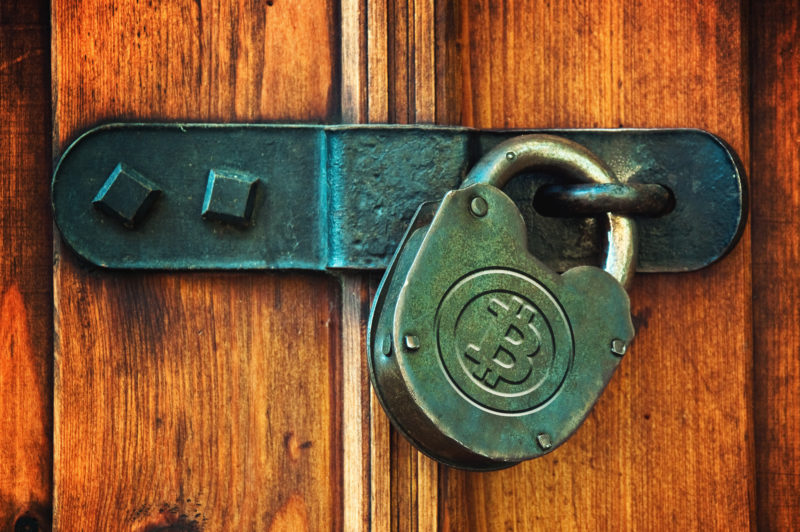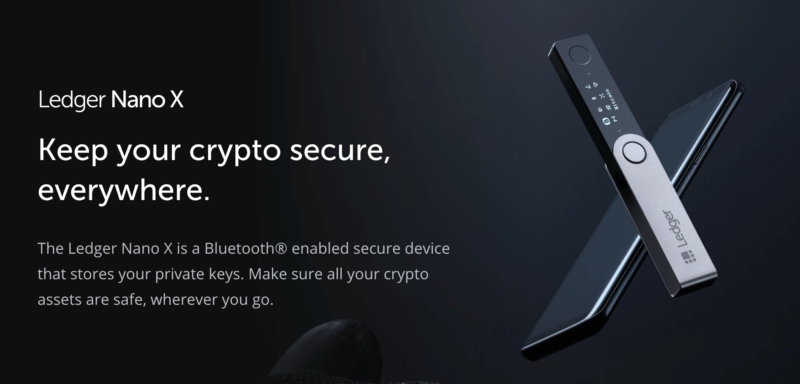
I first came across Bitcoin in 2014 and kept it on my radar for a couple of years by following industry news via blogs and newsletters. Then, in 2016, I took a deeper dive and ever since I have been obsessed with understanding how cryptos work and what impact they will have on the world.
I love the innovation that is happening in the crypto space right now, and I believe that crypto will be one of the monumental improvements in the history of humanity.
I’m still particularly excited about Bitcoin and Ethereum.
A Simple and Sensible Crypto Investing Strategy
The crypto space has had the time to mature over the past ten years, but it’s still in its infancy and as such huge returns are in store for those who enter the space now.
Bitcoin and Ethereum, in my view, are sure bets. At this stage, I would rather keep my money reserves in Bitcoin rather than fiat currencies such as USD and EUR. That is how much I believe in this cryptocurrency.
Ethereum, on the other hand, will probably be more volatile and has a more uncertain future with the move to Ethereum 2.0, however, from an investment standpoint I think it will offer even better returns than Bitcoin. If we take an optimistic view of Ethereum’s future (think DeFi and other possible applications), then it is easy to understand how undervalued Ethereum currently is.
In the rest of this article, I’ll talk about various facets of a crypto strategy that I think can provide good returns and minimum downside.
As with any other investment, before you start off, you need to be aware of the risks and also be very clear about your objectives.
For this strategy, I am going to assume that the investor is young and therefore has a long time horizon for investing, and has a decent-sized amount saved up. He also has a good monthly income that covers living expenses, such that any temporary or permanent impairment of his investments will not disrupt his daily life.
Here’s how I would structure things.
Fiat reserves
I would hold one year of living expenses as a cash reserve in my home currency, provided that it is one of the top currencies and not subject to rapid devaluation. So I would be OK keeping EUR, USD or GBP but not OK with keeping Argentine pesos, for example.
Read more: The best crypto-friendly banks in Europe
With the money printing that is going on at the moment, it is quite possible that there will be a degree of currency debasement, but until we can readily pay for our daily expenses by other means, it is prudent to hold 6 months to a year of fiat currency cash reserves.
Crypto wealth – Commodity money
This is where you would hold the majority of your net worth. Specifically ETH and BTC.
Commodity money is a money whose value comes in part from its use as a commodity and in part from its use as a money. This is in contrast to representative money which has no intrinsic value or fiat money which is established by government decree.
- Commodity money: gold, silver, copper, cigarettes, shells
- Representative money: bank notes, checks, USD (when USD was gold-backed)
- Fiat money: dollars, pounds, euros, yen, yuan
Among the above types of money, commodity money is unique in the sense that it is the only form of money that has an underlying value. Even though we no longer use commodities such as gold as a form of money; it still has value as jewelry or gilding.
Now the major question here is whether you should use DCA investing or put in a lump sum. If it were me and I had a lump sum I would invest it right away, and the reasoning is that we are in a unique moment in history – at the beginning of possibly the most important innovation of our generation, and we know from history that investing early gives the best returns. The nice thing is that Bitcoin has 10 years of history and is no longer a highly speculative moonshot anymore. It’s utility has been proven and adoption is increasing day by day. However, if you don’t have a lump sum or just want to invest on a monthly basis in a hands-off manner, you can use a service like Swan Bitcoin (if you’re in the U.S.).
Crypto speculation – The moonshot
Every so often, there are extremely good opportunities to hit it big with certain asset classes. Think of real estate in an area that is on the cusp of an explosion in tourism, or Apple just before the release of the first iPhone.
And there you have it. If you want to keep it nice and simple, you can stick to the above strategy. For those who seek the thrill of gambling, there’s always the opportunity to trade crypto, but in my opinion, in the long run it’s going to be a losing game when you factor the time needed as well as fees paid.
An important part of this strategy is the idea of never selling. Instead of selling your crypto and possibly becoming liable for capital gains tax, as well as losing out on more appreciation, you would take out a loan using a service like Nexo.
How to Buy Bitcoin, Ethereum and Other Cryptos
If you’re reading this, you probably want to know where to start from. The first thing is to buy some crypto, and I really do suggest sticking to Bitcoin or Ethereum for your first purchases.
In order to buy either of those (or other coins you’re interested in), you need to head over to an exchange and open an account, just like you would with a traditional stockbroker.
Here’s a handy list of crypto exchanges that I’ve reviewed. These are all solid options for buying crypto and trading.
If you want to do some more advanced crypto trading, for example using derivatives, I would look at the following platforms:
How to Earn Interest on Your Crypto
Earning interest on your cryptos is a great way to maximize your overall return, especially since crypto assets like Bitcoin don’t produce any returns. These are the platforms I’d recommend:
For more information about how crypto savings accounts work, read my in-depth guide to the best platforms for crypto lending and borrowing.
How to Spend Your Crypto
Holding on to your crypto stash and seeing its value in USD, EUR, etc rise steadily is definitely a very satisfying experience, but the reason why we all want to earn money is to eventually be able to spend it to buy what we need and want.
While in the past it was very difficult to do anything with your crypto once you buy it, nowadays it has become much easier to earn crypto and spend it. Many companies are offering their employees the option to earn their salary in Bitcoin, and if you sell any services or products, you can also offer your customers the option to pay in crypto.
When it comes to spending it, you have a few options depending on the situation.
Using a Crypto Debit/Credit Card
If you’re at your local coffee shop or grocery store, chances are that they won’t yet accept cryptos directly, so the best way to use crypto in those situations is to have a crypto credit/debit card on hand.
With a crypto debit/credit card you can spend crypto at any shop that accepts the typical Visa or Mastercard cards. Look into the following options:
Crypto debit cards are one of the most important elements needed for the crypto space to continue growing. With such cards, you don’t need to worry about holding fiat currencies, you can just hold cryptos and whenever you’re at a shop you can just swipe your crypto debit card and the corresponding part of your crypto will be converted to the fiat currency that the merchant uses in order to make your payment and get your goods or services.
Buying Gift Cards with Crypto
Many big brands offer their customers the ability to buy gift cards. This has been leveraged by Bitrefill in order to offer us the ability to buy these gift cards with crypto.
Buy Luxury Items with Crypto
You can buy expensive watches, sports cars, jewelry and whisky over at Bitdials, a website that specializes in sourcing luxury products and delivering them straight to the customer’s door in exchange for crypto.
If I Was a Betting Man…
Finally, if you’re someone who enjoys the adrenaline of betting, you should check out my post about the best crypto betting and gaming platforms.
I’ve personally never been much of a gambler, however, I think that cryptocurrencies have brought a positive change to this space. Platforms can now be provably fair, and you can maintain total privacy while enjoying your bets or poker games. You can eliminate the need for bank transfers and credit cards, which might land you in trouble with your bank or local jurisdictions.
Here are some of the most reputable crypto gaming and betting platforms available today:
There are also some real innovations in decentralizing gaming platforms. PoolTogether is an excellent example. I’ve always hated lotteries due to their manipulative nature and just the fact that they are one of the worst ways to throw away money that I can imagine.
PoolTogether totally changes that. The way it works is that everyone pools in their money in one pot, then that total sum is invested in a DeFi lending platform, and after a certain time period interest is obtained and aggregated to the original pool. At that point, a winner is randomly chosen (the more you put in, the bigger a chance you have of winning), and he wins all the interest earned by the pool. Here’s the great part about all this: all other non-winners get returned their original investors.
So while there is one winner, nobody loses either. I find it to be a much better alternative to buying a traditional lottery ticket.
What is the place of crypto in an investor’s portfolio?
Bitcoin is not always inversely correlated to the equity market, and will not simply rise every time the market falls.
I do think, though, that Bitcoin can be thought of as a hedge asset, so let’s explore what we would be hedging against.
Cryptoassets offer a hedge primarily against two things:
- Large monetary disarrangements: currency debasement, rampant price inflation, central bank and fiscal policies gone awry, etc.
- Geopolitical risks that could lead to government actors seizing, freezing, or egregiously taxing citizens’ assets.
See also: Is this the right time to buy Bitcoin?
While crypto is a hedge, it’s specific types of risks that motivate investors to turn to Bitcoin. Knowing that can help one make sense of its moves.
Crypto assets have so far shown to be uncorrelated with other assets, making them a perfect hedge and in my opinion, deserving a place in investors’ portfolios as a diversification tool
How to Transfer Fiat Currency to a Crypto Exchange

In order to be able to buy cryptocurrencies on an exchange, you need to first transfer some Euro, USD, or other fiat currency. Many major commercial banks have unfortunately decided to make things difficult for people and businesses who want to buy cryptos from big exchanges such as Kraken and Binance.
Digital banks such as N26, Revolut, and Wise, which are otherwise great choices for your day to day needs, all impose restrictions on transfers to crypto exchanges, although Revolut lets you buy crypto assets directly from within the app. So that’s one option to keep in mind if you’re absolutely stuck not being able to transfer fiat to an exchange.
The key thing to understand is that many of the local banks block transfers to a particular bank account. So if your favorite exchange has several bank accounts you can transfer into, try them all and see if the bank accepts any of them. You can also try a different exchange altogether. Just look at the exchanges I mentioned earlier, at least one of them will work for you. Banks typically only block transfers to the most famous and biggest exchanges.
The best exchange to try if you’re having problems with sending fiat, is without a doubt Binance. They’re the exchange that has the most options for transferring fiat currencies, and I can almost guarantee that you will manage to transfer money to them in order to buy a cryptocurrency.
I hope that helps all those of you who are stuck dealing with their banks. I don’t think it’s an insurmountable issue as cryptocurrencies are becoming more mainstream and exchanges are more regulated nowadays, so the financial sector is less concerned about these things.
How to Store your Bitcoin and other Crypto-assets

Many people make the mistake of stopping there and keeping all their newly bought cryptos on the exchange itself. This is a classic newbie mistake and you might pay for it dearly if you don’t follow the advice in this post.
So what’s the problem with keeping your cryptocurrencies on the exchange? Well, you’re basically keeping your money in someone else’s wallet. So if a hacker gains access to that wallet (and all main exchanges are primary hacker targets) that hacker will gain access to your assets. This is not something hypothetical, it’s something that happened time and again. The most famous such case was the case of Mt Gox where thousands of people lost their investments when the site got hacked (allegedly).
Never keep your purchased cryptocurrency on the exchange. If the exchange is hacked, you might lose all your crypto. This has happened in the past and will most probably happen again in the future as no system is hack-proof.
Here are a number of ways people have lost bitcoin:
- User’s computer is hacked and web wallet password is stolen
- Web wallet server gets hacked and bitcoins are stolen
- Web wallet company goes bankrupt
- FBI or other enforcement agency confiscates coins
- Web wallet provider points to ToS violation and takes coins
- Owners of web wallet company run away with coins
- Bug in web wallet software leads to loss of coins
- Your computer or cell phone is stolen while you are logged in and thieves then steal your coins
Exchanges are designed for the trading of Bitcoin. They expect people to be depositing very large amounts of money, and want to ensure that gets handled properly. Withdrawing money from exchanges is not very convenient, because they assume people won’t be doing it very often and they want it to be safe and secure. Trying to make an online purchase using Bitcoin from your Kraken account won’t be as easy as using an actual wallet, and using it to make an in-person purchase at a store would be even worse!
The solution is to take your cryptocurrencies off the exchange and store them offline for maximum security. Note the keyword offline, which means that your private key must be stored in a format or container that is not connected to the Internet and thus can’t be electronically hacked.
The most convenient offline hardware wallets are those manufactured by a company called Ledger. They have two main products:
- Ledger Nano S – €59
- Ledger Nano X – €119
The Ledger Nano X is the newest product and has some cooler features when compared to the Nano S. Considering the difference in price, I would recommend the Ledger Nano S to most people. If you see anything in Ledger Nano X’s feature list that you absolutely can’t do without and the Ledger Nano S doesn’t have it, consider going for the Ledger Nano X.
Also, if you have big cryptocurrency investments, then perhaps the price of the Ledger Nano X is dwarfed in comparison to the investment and the added convenience of this device. The bottom line is you can’t go wrong whichever you choose. I have the Ledger Nano S and am happy with it.
Now, having a hardware wallet like the Ledger Nano S is all well and good, but you might be wondering what happens if you lose this tiny device. Would all your crypto be gone?
Nope, you can rest safely as long as you are in possession of the seed phrase. When you first set up your wallet on the Ledger devices, the device will ask you to write down a 24-word seed phrase that you should keep safe. In the packaging, you will find a card that is made specifically for you to write down the seed phrase on it. You then take this card and store it somewhere super safe. For example, you can store it in a bank security box. I would recommend making two copies of the seed phrase really, it’s too risky to rely on just one copy.
An alternative to the Ledger is the Trezor.
With your 24-word seed phrase can recover your wallet from any wallet supporting 24-word passphrases, compatible with:
- BIP39 wordlist,
- BIP32 (Hierarchical Deterministic wallets specifying a generic key derivation method)
- and BIP44 (specifying how the keys are derived) standards.
For maximum safety, I would recommend that you buy another Ledger Nano or Trezor offline hardware wallet compatible with the 24-word seed phrase and restore to that device.
It is important to store the 24-word seed phrase securely, not running around on a piece of paper and definitely not stored on your computer. One good way to do it is using the Billfodl.
What about paper wallets?
Paper wallets were the standard method of cold storage before hardware wallets were built. Paper wallets are private keys printed out on a piece of paper. If generated and printed with a secure, offline computer, paper wallets are secure cold storage.
The main problem with paper wallets is it can be inconvenient to create and print a new wallet each time you send funds to cold storage. However, it’s possible to bulk print paper wallets to save time and eliminate address reuse. Our cold storage guide explains step-by-step how to create a secure paper wallet.
What are hot wallets?
Hot wallets refer to Bitcoin wallets used on internet-connected devices like phones, computers, or tablets. Because hot wallets run on internet-connected devices there is always a risk of theft. Think of hot wallets like your wallet today. You shouldn’t store any significant amount of bitcoins in a hot wallet, just as you would not walk around with your savings account as cash.
If only used with small amounts, hot wallets should be used for your everyday Bitcoin needs. One may, for example, want to keep $200 worth of bitcoins in a hot wallet for spending, with $10,000 locked away in cold storage.
If it were me, I’d at least use a hot wallet I controlled like Mycelium for Android or Breadwallet for iOS. You could always look into hardware wallets like Trezor if you are trading large amounts.
Take a look at my post about the best crypto mobile wallets.
Bitcoin desktop wallets:
- Exodus
- Bitcoin Core
- Electrum
- MultiBit HD
- If you are dealing with large amounts of bitcoins you will need a secure wallet. Hardware wallets and secure offline wallets like Armory are good options.
- Use combinations. Use a mobile wallet as your checking account, and a hardware or secure offline wallet as your savings account. Mix and match to find a combination that provides both security and accessibility.
 Again, the best way to store your precious cryptocurrency is to buy a hardware wallet, thus having your crypto stored offline away from any danger of getting hacked.
Again, the best way to store your precious cryptocurrency is to buy a hardware wallet, thus having your crypto stored offline away from any danger of getting hacked.
My favorite hardware wallet is the Ledger Nano X.
Important note: I am not a financial advisor and cryptocurrencies are considered to be very high-risk investments. Only risk money you can afford to lose.
